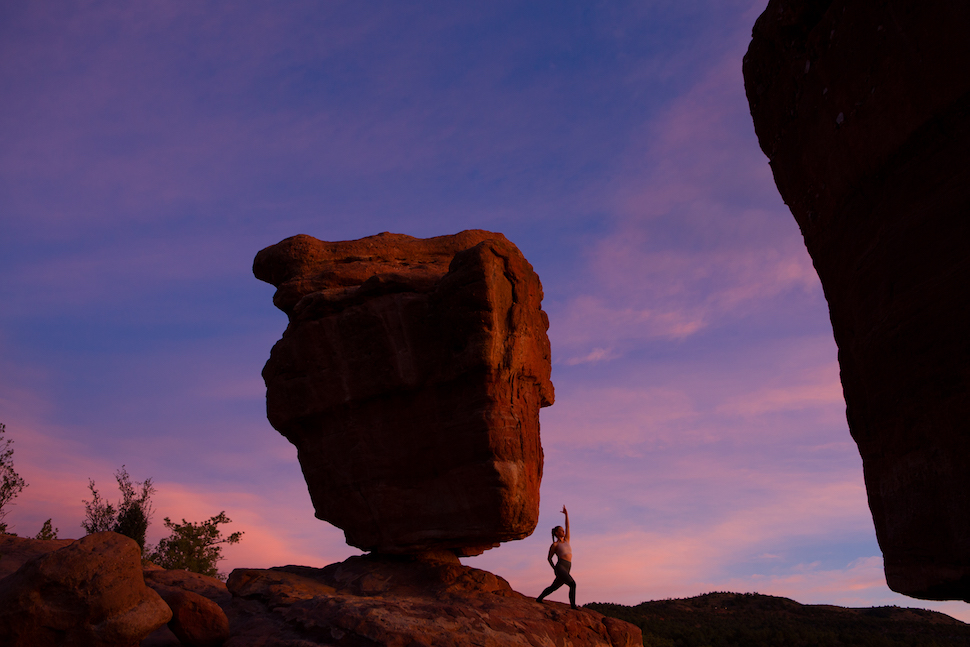
There are many time-honored paths and practices for profound life change: One can sit perfectly still, hold postures, walk like a pilgrim, dance like a dervish, climb a mountain, spend three years in a cave, or step out of a perfectly good airplane. The list goes on, and as Carlos Castaneda pointed out back in 1968 in The Teachings of Don Juan, “All paths are the same. They lead nowhere . . . Does it have a heart?”
Castaneda’s observation became famous because he was writing as an anthropologist revealing the deep wisdom of the Yaqui Indians. But it later came out that Don Juan is a work of fiction and Castaneda was probably stoned on peyote, giving the highlights of his trips. But was he wrong?
I ask that question because I read Don Juan as a kid and have spent some forty years writing and editing stories about spirituality and health. Nevertheless, my combined spiritual/wellness experience was not protective against that deep funk so many experienced during Covid: All paths are the same, I decided. They lead nowhere! The best revenge is a bottle of wine and Netflix.
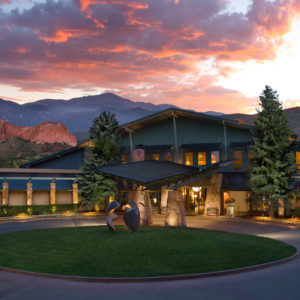 And that’s when my wife Mary got an invitation to check out a new retreat concept at the Garden of the Gods Resort in Colorado Springs. The three-night, all-inclusive luxury retreat was a first for the resort—and perhaps a first anywhere. The goal was “self-care for self-love,” and the brochure detailed a total immersion experience with an entire alphabet of spiritual paths and practices almost on top of each other.
And that’s when my wife Mary got an invitation to check out a new retreat concept at the Garden of the Gods Resort in Colorado Springs. The three-night, all-inclusive luxury retreat was a first for the resort—and perhaps a first anywhere. The goal was “self-care for self-love,” and the brochure detailed a total immersion experience with an entire alphabet of spiritual paths and practices almost on top of each other.
Including in the packed schedule was everything from acupuncture to Ayurveda to breathwork to cooking demos, to community dinners, to elixir-making, to essential oils, to fitness breaks, to group reflection, to hiking, to intention setting, to IV treatments, to journaling, to mala-making, to massage, to meditation, to Nia dancing, to quiet time, to rock painting, to sound bathing to snack-making, to Tai chi, to tea-making to yoga nidra.
The goal was “self-care for self-love,” and the brochure detailed a total immersion experience . . .
All of this, it turned out, was part of co-owner Judy Mackey’s grand vision to transform the classic golf resort into an integrated wellness destination centered around the resort’s new spa and wellness center called Strata Wellness.
“Have fun,” I said to Mary. But she couldn’t go, and thought I should instead. “No way,” I replied. “I’ve done most of those things over the years and it all sounds exhausting.” But as it says in the Tao Te Ching, when the student is sulking in his office, the teacher will send emails and even call with choices of spa treatments as well as questions that get down to that most basic: How to get out of a rut? And maybe something better: How to become the change you wish to see?
So, I said, “Okay. But if I’m going, I’m not some fly-on-the-wall journalist. I’m all in.”
As it turned out, almost everyone else at the retreat was “all in” as well— and that says something when the group consists of a cardiac nurse, an extremely successful businessman, and two former Olympic athletes (cycling and rowing). Sadly, the fifth member of our small group never returned to the retreat after the first dinner. That left the perfect group for three days of unexpected magic that should put Garden of the Gods on the map both as a high-end wellness retreat destination as well as a source of wellness innovation.
How it Happened
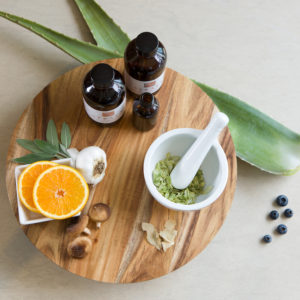 Kelly Stoinski, the woman at the heart of this new retreat, is 29 and spent her first four years at Garden of the Gods in the spa as a massage therapist. For many years, she has also studied Ayurveda, the ancient, all-encompassing school of wellness from India, and so Kelly became fascinated with Judy Mackey’s vision of an “integrated, across-property wellness experience.” Then, about a year ago, Stoinski started doing programming for the Strata Wellness Center, and the idea of a community centered retreat was born. Says Stoinski, the retreat was a way of really pushing that vision. “To make it work, everybody has to be in a wellness mindset: from the resort check-in, to the dining, even the room amenities and housekeeping—everyone has to shift their perspective toward wellness.”
Kelly Stoinski, the woman at the heart of this new retreat, is 29 and spent her first four years at Garden of the Gods in the spa as a massage therapist. For many years, she has also studied Ayurveda, the ancient, all-encompassing school of wellness from India, and so Kelly became fascinated with Judy Mackey’s vision of an “integrated, across-property wellness experience.” Then, about a year ago, Stoinski started doing programming for the Strata Wellness Center, and the idea of a community centered retreat was born. Says Stoinski, the retreat was a way of really pushing that vision. “To make it work, everybody has to be in a wellness mindset: from the resort check-in, to the dining, even the room amenities and housekeeping—everyone has to shift their perspective toward wellness.”
The next step was a series of wellness weekends last fall that were open to everyone at the resort. Stoinski used those weekends to experiment with various activities, get the entire staff as well as an assortment of outside practitioners involved, and begin to see how beautiful days might flow together. The logistical challenges were immense: What she planned was essentially a 50-course personalized meal spanning three and half days and hosted during a pandemic.
What that meant in practice is that I was met at the Colorado Springs Airport by a driver from the resort who knew why I was there and offered to do whatever he could to make the retreat as enjoyable as possible. I then checked into my room with a spectacular view of Pikes Peak, as well as the ancient red rock crater, the namesake of the Garden of the Gods. Housekeeping had left an ice bucket with a bottle of sparkling water, some fruit and chocolate, a vision card, and my itinerary for the day. Then I was off to meet the group at one of the resort casitas, our private clubhouse for the retreat. Our first exercise involved Post-it notes and colored pens and a huge sheet of paper to begin to focus what our own perfect day might look like and to set an intention for the retreat. Our goal overall was to fill our days with more of the things we love doing while pushing away more of the things we don’t.
The Heart of the Resort
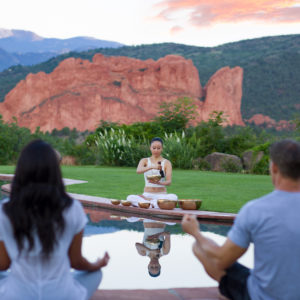 Next for me was my first spa experience at Strata Wellness, the beautiful new heart of the resort where the new men’s lockers had just been installed and the master key had not yet arrived, so there was some concern whether it could be opened again if I forgot my combination. Hmmm. And my treatment, the Colorado Pine Body Therapy and Flotation Experience, proved similarly novel: I was exfoliated with a brush, slathered in oil, and then then sunk in an all-encompassing waterbed called the Haslauer Flotation Therapy bed that was invented in Austria for dealing with the pain of rheumatoid arthritis.
Next for me was my first spa experience at Strata Wellness, the beautiful new heart of the resort where the new men’s lockers had just been installed and the master key had not yet arrived, so there was some concern whether it could be opened again if I forgot my combination. Hmmm. And my treatment, the Colorado Pine Body Therapy and Flotation Experience, proved similarly novel: I was exfoliated with a brush, slathered in oil, and then then sunk in an all-encompassing waterbed called the Haslauer Flotation Therapy bed that was invented in Austria for dealing with the pain of rheumatoid arthritis.
For about forty minutes I was alone, encapsulated like a warm mummy, armed with a button to press in case I panicked. Hmmm. It was pleasant, but also baffling. Why? I was then released from the bed, relieved that my locker opened just fine, and as I walked down the grand marble stairs I realized I now felt marvelously loose and relaxed despite having woken up a 3:30 a.m. to catch a couple of small planes with tight connections. Normally, those early flights leave me feeling like I have rheumatoid arthritis—and it struck me that real thought went into choosing how an air traveler’s body might best begin a retreat on self-care and self-love. That choice was both unexpected and impressive.
What happened next was also unexpected and pivotal. Our group of five had a reserved table for every meal with our own special menu based on what we said we wanted, as well as the choice of ordering from the main menu. Whatever we wanted was fine, the waiter explained. Super healthy or super indulgent. Whatever. And that’s when the cardiac nurse said something like. “I thought I wouldn’t drink during the retreat but what I’d really like right now is a Kettle One Martini.” To which I found myself saying, what the heck? A Kettle One Martini sounds just great.
And then we learned that our business tycoon knew pretty much every wine on the extensive list, and spirits soared. Soon we were revealing such secrets as why we were really here and even who we voted for (and it wasn’t the same way—and so what?) For one member of the group this was probably all too much. But for the rest, there was a decision to let go of whatever we could in the hope that the retreat would in fact be somehow transformative. I retreated to my room to do my journaling “homework,” noting that this retreat was not an ashram. Nor was it alcohol-verboten Canyon Ranch. Nor, for that matter, was it like Netflix’s “Nine Perfect Strangers,” where everyone was secretly micro-dosed with psilocybin. This seemed more fun than any of those.
A Gentle Magic
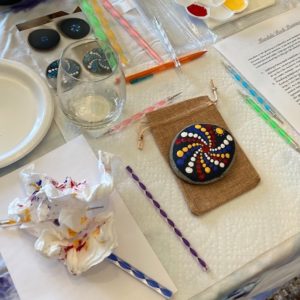
The author’s painted rock; photo by Steve Kiesling
The next couple of days had their own kind of gentle magic. Each morning we gathered early for a wake-up drink that was warm and energizing—the Spiced Chocolate-Chaga Immune Elixir or the Anti-Inflammatory Turmeric Latte—instead of coffee—and then some kind of movement that was mindfulness based like Tai chi or Nia dancing. Then came a meditation or breathing exercise and more journaling—all before breakfast. After that came activities like stringing mala beads and rock painting, two normally cringe-worthy possibilities that actually proved both fun and interesting mostly because the teachers and facilitators were so passionate.
Aside from crafty activities, listening to singing bowls and creating personalized snacks and teas and oils in our clubhouse, we also hiked among the rock formations of the Garden of the Gods, pausing along the path to gather for more Tai Chi. I felt silly at first as I fumbled through a new set of “flying duck” movements on a public trail, but part of self-love is remembering not to feel silly when something is healthy and feels good, especially in such good company. Interspersed with all this group stuff was a great massage and acupuncture treatment, plus an hour with Stoinski learning about Ayurveda. Now I have an Ayurvedic tongue scraper to go with my toothbrush. Who knew?
The final night was supposed to finish after dinner in our clubhouse with yoga nidra, which seemed entirely appropriate for self-care. One hour of yoga nidra (essentially playing dead) is said to be the equivalent of four hours of regular sleep. However, it turned out that our rock painting teacher is also an extraordinary rock musician, and she happened to be playing her guitar at the resort that evening. So, rather than play dead in our clubhouse, we went for the music and the wine list. Our Olympic cyclist had expected to leave that evening to prepare to lead a Peloton workout, but chose instead to stay and then got us all to dance. I don’t remember another retreat in which the final night was truly a blast.
The Path Ahead
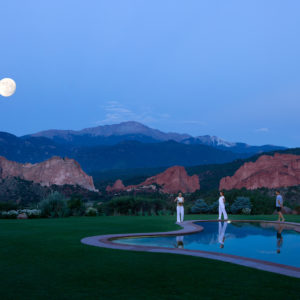 Our final group activity the next morning was to write down a small change that we would commit to for the days ahead, and also to fill up a canvas bag with our malas and rocks and teas and snacks as well as a complete set of tools and instructions and recipes that would allow us to continue all of the practices and skills that we had learned—and even some we didn’t have time to get to. Just working through everything in the bag could take weeks or months, or years.
Our final group activity the next morning was to write down a small change that we would commit to for the days ahead, and also to fill up a canvas bag with our malas and rocks and teas and snacks as well as a complete set of tools and instructions and recipes that would allow us to continue all of the practices and skills that we had learned—and even some we didn’t have time to get to. Just working through everything in the bag could take weeks or months, or years.
Before I left, I asked Stoinski what she thought of the retreat, and she said it was perfect, and I had to agree. I then asked what the resort’s next retreat would be like, and she said she might do a lot of the same activities, but the intention might be different. “It’s a creative process. We might kind of shift gears, do a different focus when we present it. Then she laughed. “Maybe detox,” she said.
As I was driven to the airport with my canvas bag at my feet, the driver asked about the retreat, and I said it was exactly what I needed. What I didn’t try to explain—although I think it is true—is that every path represented in that canvas bag is the same. It leads towards self-care and happiness. And the people represented by those paths were all heart.
Stephen Kiesling
Stephen Kiesling is a writer and editor whose career was launched in 1982 with the classic rowing book The Shell Game and The New York Times Book Review, “Just as it is good that there was a riverboat pilot who could write…it is good that there is one true blue jock who can.” A Scholar of the House in philosophy at Yale, Stephen was a 1980 Olympic oarsman who also raced in the 2008 Olympic Trials. He learned journalism from T George Harris, a decorated World War II artillery scout and Time reporter who created Psychology Today. T George and Stephen launched both American Health magazine and Spirituality & Health, where Stephen continues as Editor at Large. He has written for the New Yorker, Sports Illustrated and Outside, was a spokesman for Nike, started a celebrated rowing club, and has built parks and playgrounds. He lives at Ti’lomikh Falls on the Rogue River in southern Oregon, where he writes for his wife Mary Bemis at Insidersguidetospas.com. Stephen is also the caretaker of one of America’s oldest Salmon Ceremonies and is working on a whitewater park and sculpture garden. He is interested in transformational retreats, anything to do with water, the Native American origins of our democracy, and the process of becoming what he calls an Earth-Indigenous Elder, a person who knows their own story from the beginning of time.